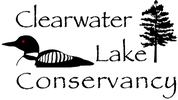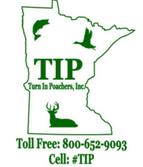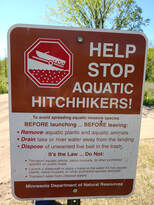History of Tracking on Clearwater Lake
by Jeff Zernov
Paulette and I started placing Loon nesting platforms around 1995. At first we placed a cedar log platform in our bay then moved to the 4” PVC construction
At the start we had years with no birds using our platforms and no natural nesting-no chicks on the lake. It took us a while to learn exactly how critical location is.
We did not keep good records until we started reporting to the DNR because the most important year to us is the current year and applying our learned knowledge from the past to the current situation.
We have grown our platform count to the current 7 locations. In 2014 we tested an 8th location but have since abandoned that effort. There is a lot of magic to nest locations because loons will not nest in sight of another nesting pair and the nest location must allow for noncompetitive chick nursery areas with a large food shelf and storm shelter. Nursery areas change from year to year based on hatch mortality. It took us 5-years to get a pair to use nest #5 even thought we had a non-nesting pair on the lake and in the area for all those years. For a number of years, Al Kittock placed a nest in Bay 6 (our bay), and for the past years we have taken that over.
We always place nests the first weekend after ice out to be sure the returning pairs have a nest to defend. I check the nests near every day until the adults start sitting on eggs so as to defend the nests from Muskrats, Otters and other undocumented aliens.
In 2008 we started reporting our nest success to the local Non-Game DNR and the USGDS. Our efforts have shown, with proper nest location and planning for chick nursery areas, a lake can support many more nesting pairs than previously thought. Through the years we’ve tested many different platform sizes, vegetation mats and locations to arrive at our current configuration and we continue to test.
In 2012 we worked with the USGS to put leg bands on 4 of our birds and in 2013 we helped install a RF pinger in a chick to track their fall migration.
Two times we have refreshed nests after the chicks have been lost by storms or predators. Both times we were successful in getting the adults to re-nest and both hatched 2 eggs. However hatching so late in the season makes it very sketchy whether the chicks will be strong enough to make the fall migrations before freeze up. We have since determined not to refresh nests when Chicks are lost.
The primary cause of chick mortality on Clearwater is storms occurring soon after the chicks hatch, followed by eagles and water skiers.
In 2017 we installed a live stream loon nest cam in bay #6 (our bay). It was a great project and was watched by both lake members, professionals and others.
Thank you to all the people we’ve had help with the spring vegetating of the nests and nest placement; Dan and Patty Sura, Lance Baumann, and Gary Johnson. In 2021 the next generation of Zernovs are learning the art of loon management.
At the start we had years with no birds using our platforms and no natural nesting-no chicks on the lake. It took us a while to learn exactly how critical location is.
We did not keep good records until we started reporting to the DNR because the most important year to us is the current year and applying our learned knowledge from the past to the current situation.
We have grown our platform count to the current 7 locations. In 2014 we tested an 8th location but have since abandoned that effort. There is a lot of magic to nest locations because loons will not nest in sight of another nesting pair and the nest location must allow for noncompetitive chick nursery areas with a large food shelf and storm shelter. Nursery areas change from year to year based on hatch mortality. It took us 5-years to get a pair to use nest #5 even thought we had a non-nesting pair on the lake and in the area for all those years. For a number of years, Al Kittock placed a nest in Bay 6 (our bay), and for the past years we have taken that over.
We always place nests the first weekend after ice out to be sure the returning pairs have a nest to defend. I check the nests near every day until the adults start sitting on eggs so as to defend the nests from Muskrats, Otters and other undocumented aliens.
In 2008 we started reporting our nest success to the local Non-Game DNR and the USGDS. Our efforts have shown, with proper nest location and planning for chick nursery areas, a lake can support many more nesting pairs than previously thought. Through the years we’ve tested many different platform sizes, vegetation mats and locations to arrive at our current configuration and we continue to test.
In 2012 we worked with the USGS to put leg bands on 4 of our birds and in 2013 we helped install a RF pinger in a chick to track their fall migration.
Two times we have refreshed nests after the chicks have been lost by storms or predators. Both times we were successful in getting the adults to re-nest and both hatched 2 eggs. However hatching so late in the season makes it very sketchy whether the chicks will be strong enough to make the fall migrations before freeze up. We have since determined not to refresh nests when Chicks are lost.
The primary cause of chick mortality on Clearwater is storms occurring soon after the chicks hatch, followed by eagles and water skiers.
In 2017 we installed a live stream loon nest cam in bay #6 (our bay). It was a great project and was watched by both lake members, professionals and others.
Thank you to all the people we’ve had help with the spring vegetating of the nests and nest placement; Dan and Patty Sura, Lance Baumann, and Gary Johnson. In 2021 the next generation of Zernovs are learning the art of loon management.


